Finding yourself stranded in the wilderness without food or water is an unlikely, albeit, possible scenario. Being prepared for these types of scenarios is what separates those who survive from those who expire.
While food is important, you can live without it for weeks, but water is a non-negotiable. Without water, you can’t live longer than a few days.
One of the most important things you can learn is how to extract water from the environment in the wild. One of the issues people often face is that they can’t find a safe and clean source of water in the wilderness.
Thankfully, plants and trees are great sources of water if you know how to work with them. The water extracted from plants is usually clean and safe to drink.
Related: Easy DIY Water Purification System For Under $20
Depending on the plant, you can extract enough water to last you throughout any emergency scenario.
In this post, I will teach you how to identify the best plants for water extraction and a few simple methods to do it with minimal equipment.
Extracting Water Through Condensation
Plants and trees transpire water, which means they release water as vapor from their leaves throughout the day. You can take advantage of that by collecting this water through condensation.
All you need to extract water from plants through condensation is a clear plastic bag, a small rock, and something to tie the bag around the plant foliage.
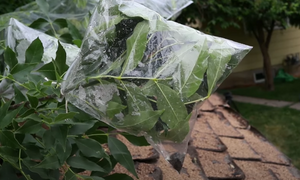 The idea here is to find a clean branch with large leaves that gets a lot of sunlight.
The idea here is to find a clean branch with large leaves that gets a lot of sunlight.
Then place your small rock into the plastic bag (to weigh it down) and place the bag around the branch, tying it up to the branch at the top.
The rock is not required, but it helps add a downward slope to the bag where the water can gather.
Related: 7 Mistakes To Avoid When Harvesting Rain Water
You’ll have to leave the bag on the branch for 4-5 hours to get a decent amount of water. The hotter it is and the more sunlight your branch is getting – the quicker the water will accumulate.
The best part about this method is that it doesn’t harm the plants at all – you are simply capturing the water that the plants are releasing anyways.
You can do this process with any plant, just make sure that it’s not poisonous. That being said, here are a few common plats that produce water really well using this method:
Cottonwood
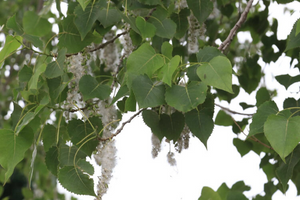 Cottonwood trees are very common in the wild – they grow in just about every region of the country.
Cottonwood trees are very common in the wild – they grow in just about every region of the country.
They are some of the fastest-growing trees, so they pull a lot of water.
This means they’re great for extracting water through the condensation method.
Cottonwood branches are higher up than those of the willow, so you might need to do a little bit of climbing to find a suitable leafy branch for your water collection.
Berry Shrubs
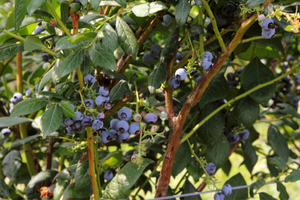 Berry shrubs are great for extracting water. If your landscape has any wild blueberries, barberries, or junipers – you’re in luck.
Berry shrubs are great for extracting water. If your landscape has any wild blueberries, barberries, or junipers – you’re in luck.
These little shrubs transpire a lot of water, and as a bonus, they can provide you some sustenance during the fruiting season.
A word of caution, however: if you’re eating wild berries, make sure you are certain of what species they are, as some can be poisonous.
Willow
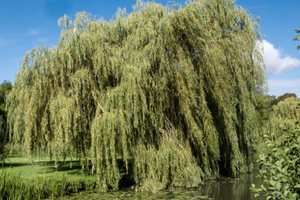 Willow trees love water and absorb a lot of it through their growth cycle.
Willow trees love water and absorb a lot of it through their growth cycle.
If there is no water in sight, you can be sure that the willow is pulling it deep from under the earth’s surface.
Willow trees make great plants for water extraction.
⇒ How To Build Your Own Pressurized Rainwater Harvesting System
They’re easy to recognize and their leaves reach low. Willows can produce 3L of water per hour from the whole tree, which means you can get a decent cup of water from a single branch after just a few hours.
The water collected from willow trees is clean and safe to drink, but make sure you shake off any insects or debris off the leaves before you put your bag around them.
Extracting Water Through Tapping
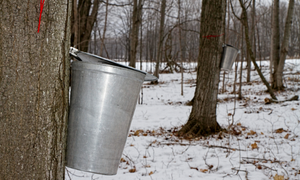 Tapping a tree is the process of extracting the watery sap from its trunk by creating a 2-inch deep hole in the tree and placing a spile into the hole. You’ll need a container to catch the sap as it begins to run down the spile. If you’ve ever made your own maple syrup, you already know how it’s done.
Tapping a tree is the process of extracting the watery sap from its trunk by creating a 2-inch deep hole in the tree and placing a spile into the hole. You’ll need a container to catch the sap as it begins to run down the spile. If you’ve ever made your own maple syrup, you already know how it’s done.
And you know that when the maple sap first comes out of the tree, it’s very watery and clear.
Although the water is safe and clean, expect it to have a slightly sweet flavor and consider that a gift from the tree to you. That sweetness is nutrition that will help you survive.
Many different trees can be tapped for water. Here are some of the best trees for tapping when you need to quench your thirst:
Maple
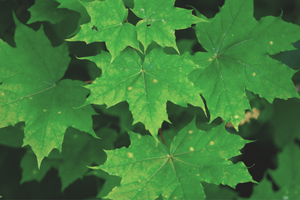 One of the best-known trees for tapping is, of course, the maple tree.
One of the best-known trees for tapping is, of course, the maple tree.
There are hundreds of different maple varieties, and you can probably find one in the wild wherever you live.
They are easy to identify due to the shape of their leaves.
During the late winter and early spring, maples are pumping a lot of water through their trunks, so you can get a decent amount of sap from tapping them.
Birch
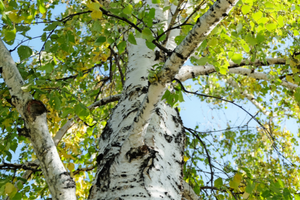 Birch is another common tree that can be found all throughout the Northern Hemisphere. They are easy to recognize thanks to their characteristic bark marked with horizontal white, silver, or yellow lenticels.
Birch is another common tree that can be found all throughout the Northern Hemisphere. They are easy to recognize thanks to their characteristic bark marked with horizontal white, silver, or yellow lenticels.
Related: How To Make Fuel From Birch
Birch trees are great for tapping in the spring. They produce a lot of water and their sap has a mildly sweet flavor.
Walnut
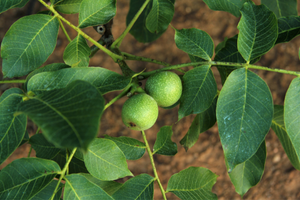 If you find a walnut tree in the wild, it can be a great source of both water and nutrition.
If you find a walnut tree in the wild, it can be a great source of both water and nutrition.
Walnut trees can be tapped from late fall to spring. If you’re lucky, you can also gather some fallen walnuts off the ground and cook them over a fire for a delicious meal.
Similarly to maple, walnut trees produce a watery sap that has a sweet flavor that is oftentimes boiled down to a syrup. Drinking the sap as-is can provide you with plenty of hydration to keep you alive.
Hickory
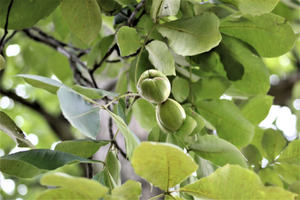 Much like the walnut trees, hickory trees can provide you with edible nuts as well as water. Hickory trees are easy to recognize by their bark – it’s ridged, grayish in color, and very easy to peel.
Much like the walnut trees, hickory trees can provide you with edible nuts as well as water. Hickory trees are easy to recognize by their bark – it’s ridged, grayish in color, and very easy to peel.
Hickory trees produce a lot of water through tapping, and it’s best to tap them in the late winter.
Wild Grapevine
Wild grapevine is a plant that doesn’t really need to get tapped to access its water, but the process is similar. It doesn’t have a single, vertical trunk like regular trees.
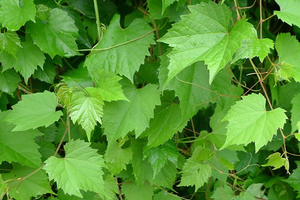 It’s a vine – it snakes and envelopes other trees. Make sure you can identify wild grapevine and don’t attempt to drink sap from any vines you’re not sure about (many of them are poisonous!).
It’s a vine – it snakes and envelopes other trees. Make sure you can identify wild grapevine and don’t attempt to drink sap from any vines you’re not sure about (many of them are poisonous!).
This plant can be found growing along roadsides, fences, vacant urban lots, river banks, and in deep forests.
To “tap” the grapevine, you only need a knife and a container to catch the water. Find a low-hanging bend in the vine – this is where most of the water inside the plant is will run to – and cut a deep notch into it until you see the sap dripping.
Place your container under the notch and prepare to receive a lot of water. You can fill a small canteen in about an hour, making this plant one of the best when you need to get water quickly. The sap of a wild grapevine tastes very much like regular water, and it’ll quench your thirst fast.
There are many ways you can extract water from plants in the wilderness. Every plant technically has water inside it, it’s just a matter of finding the plants that can give you a lot of water quickly, and won’t poison you in the process.
The most important skill you can develop is recognizing safe plants from poisonous plants. Once you know that, you can attempt the condensation or the tapping method on any of the “safe” plants to extract water long enough to survive on your own.
You may also like:
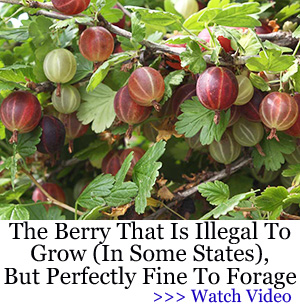 5 Best Guns to Have Against Looting Rioters
5 Best Guns to Have Against Looting Rioters
The Awesome DIY Device That Turns Air Into Fresh Water (Video)
Find Out What Areas Would Be Targeted by FEMA When SHTF (they’ll take your supplies)
40 Bizarre Home Remedies Our Grandparents Taught Us That Actually Work

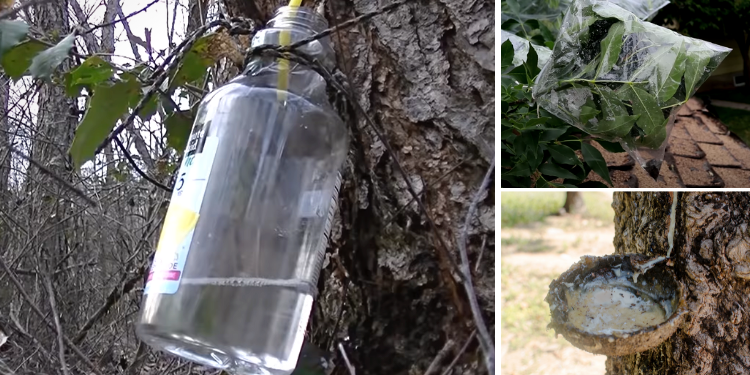













this article was very informative and could very well save someones life. thankyou for this info and keep it coming.
Good information for you to know, when the ‘unexpected’ happens…
If your tapping willow you’re…. next time to water
A Thanksgiving Day ProclamationBy Samuel AdamsThursday December 18, 1777Did you know that the Continental Congress adopted a recommendation put forth by Samuel Adams, declaring that Thursday, December 18, 1777 to be “A day of thanksgiving to God,” Samuel Adams went on to say that “In particular, God hath been pleased in so great a measure to prosper the means used for the support of our troops and to crown our arms with most signal success.” The resolution went on to say that the day would be set aside so that: “With one heart and one voice the good people may express the grateful feelings of their hearts, and consecrate themselves to the service of their Divine Benefactor; and that together with their sincere acknowledgments and offerings, they may join the penitent confession of their manifold sins, whereby they had forfeited every favor, and their humble and earnest supplication that it may please God, through the merits of Jesus Christ, mercifully to forgive and blot them out of remembrance; that it may please him graciously to afford His blessing on the governments of these States respectively, and prosper the public council of the whole; to inspire our commanders both by land and sea, and all under them, with that wisdom and fortitude which may render them fit instruments, under the providence of Almighty God, to secure for these United States the greatest of all human blessings, independence and peace; that it may please Him to prosper the trade and manufactures of the people and the labor of the husbandman, that our land may yet yield its increase; to take schools and seminaries of education, so necessary for cultivating the principles of true liberty, virtue and piety, under His nurturing hand, and to prosper the means of religion for the promotion and enlargement of that kingdom which consisteth “in righteousness, peace and joy in the Holy Ghost.” – Samuel Adams, Continental Congress.When the righteous are in authority, the people rejoice;But when a wicked man rules, the people groan. – Proverbs 29:2
True, as a general rule…until you find yourself in a drought or the river has been diverted/captured by a murderous gang of inbred rednecks, in which case, as stated in the article, the willow will be pulling moisture from deep underground if it’s still healthy. If the tree is dying then you’re gonna be pretty fuk’d in any case unless you take on or join those rednecks.
(by True, I mean the bit about the willow, not the religious crap spouted afterwards)
Um, hate to say anything, but what about toxic trees? If the leaves are not eatable, nor may the water be, I have gotten drinks from grape vines, and it’s more a gel than water. niio
The article does state “you can do this with any plant, just make sure it’s not poisonous”.
That photo with the red leaves doesn’t look like any grape vine — wild or not — that I’ve ever seen (or googled) – it looks like Virginia Creeper.